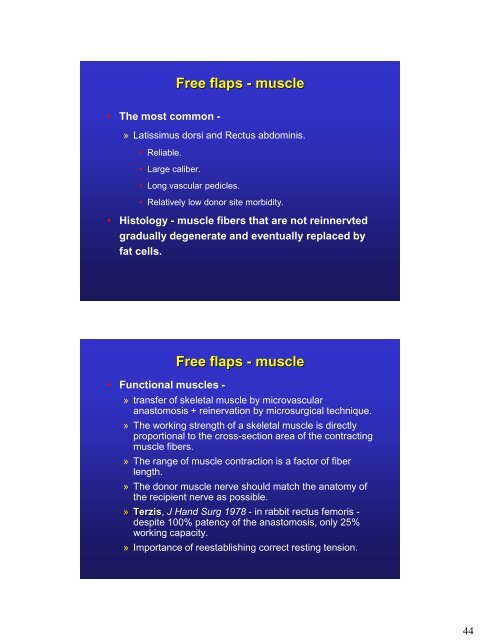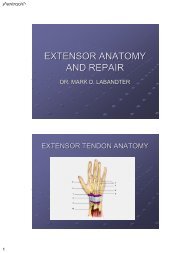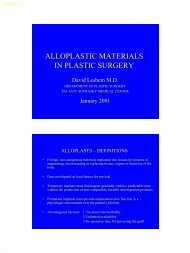Principles of Microvascular Surgery.
Principles of Microvascular Surgery.
Principles of Microvascular Surgery.
Create successful ePaper yourself
Turn your PDF publications into a flip-book with our unique Google optimized e-Paper software.
• The most common -<br />
Free flaps - muscle<br />
» Latissimus dorsi and Rectus abdominis.<br />
• Reliable.<br />
• Large caliber.<br />
• Long vascular pedicles.<br />
• Relatively low donor site morbidity.<br />
• Histology - muscle fibers that are not reinnervted<br />
gradually degenerate and eventually replaced by<br />
fat cells.<br />
• Functional muscles -<br />
Free flaps - muscle<br />
» transfer <strong>of</strong> skeletal muscle by microvascular<br />
anastomosis + reinervation by microsurgical technique.<br />
» The working strength <strong>of</strong> a skeletal muscle is directly<br />
proportional to the cross-section area <strong>of</strong> the contracting<br />
muscle fibers.<br />
» The range <strong>of</strong> muscle contraction is a factor <strong>of</strong> fiber<br />
length.<br />
» The donor muscle nerve should match the anatomy <strong>of</strong><br />
the recipient nerve as possible.<br />
» Terzis, J Hand Surg 1978 - in rabbit rectus femoris -<br />
despite 100% patency <strong>of</strong> the anastomosis, only 25%<br />
working capacity.<br />
» Importance <strong>of</strong> reestablishing correct resting tension.<br />
44












